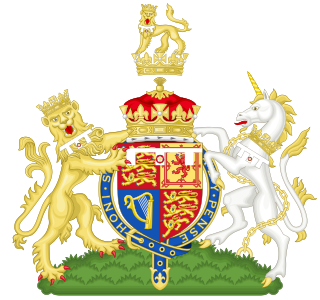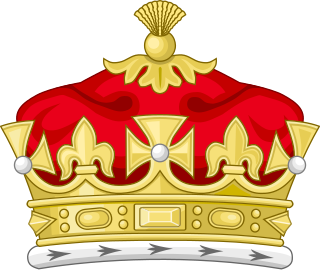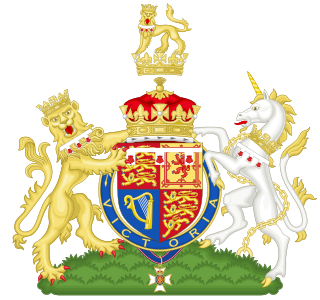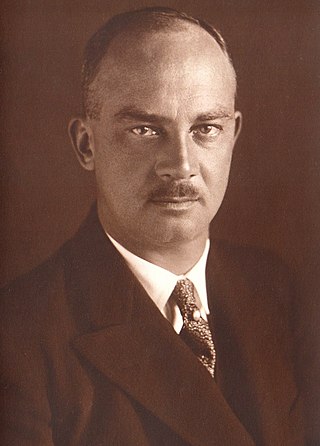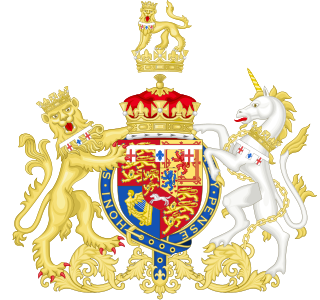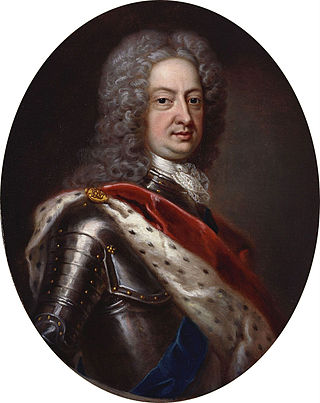| | | | | | | | | | | | Earl of Ulster (1st Irish creation), 1205 |
|
| | | | | | | | | | | | Hugh de Lacy
c. 1176–1271
Earl of Ulster | | | |
|
| | | | | | | | | | | | | | | | | Earl of Ulster (2nd Irish creation), 1264 |
|
| | | | | | | | | | | | Maud de Lacy | | Walter de Burgh
c. 1210–1271
1st Earl of Ulster, 2nd Lord of Connaught |
| |
| | | | | | | | | | | | | | | | | | | | |
| | |
| | | | | | | | | | | | | | | | Richard Óg de Burgh
1259–1326
2nd Earl of Ulster |
|
| | | | | | | | | | | | | | | | | | | |
|
| | | | | | | | | | | | | | | | John de Burgh
d. 1313 |
|
| | | | | | | | | | | | | | | | | | | |
|
King Robert II
1316–1390 | | | | | | King Edward III
1312–1377 | | | | | | William Donn de Burgh
1312–1333
3rd Earl of Ulster |
|
| | | | | | | | | | | | | | | | | | | | | | |
| | | | |
| | | | | | | | | | | | | | Lionel of Antwerp
1338–1368
Duke of Clarence, Earl of Ulster (jure uxoris) | | Elizabeth de Burgh
1332–1363
suo jure4th Countess of Ulster |
| |
| | | | | | | | | | | | | | | | | | | | |
| | | | |
| | | | | Duke of Albany (1st creation), 1398 | | Duke of York (1st creation), 1385 | | | | | | | | |
| | | |
King Robert III
1337–1406 | | Robert Stewart
c. 1340–1420
1st Duke of Albany | | Edmund of Langley
1341–1402
1st Duke of York | | Philippa of Clarence
1355–1382
5th Countess of Ulster |
|
| | | | | | | | | | | | | | | | | | |
|
| | | | | Murdoch Stewart
1362–1425
2nd Duke of Albany | | | | | | | Roger Mortimer
1374–1398
6th Earl of Ulster |
|
| | | | | Dukedom of Albany (1st creation) forfeit, 1425 | | | | | | | | | | |
|
| | | | | | | | | | | | | | | | | | | | | | | |
| | | | | | | | | | |
| | | | | Edward of Norwich
1373–1415
2nd Duke of York | | Richard of Conisburgh
1375–1415
Earl of Cambridge | | Anne de Mortimer
1388–c. 1411 | | Edmund Mortimer
1391–1425
7th Earl of Ulster |
| |
| | | | | | | | | Dukedom of York (1st creation) forfeit, 1415 | | | | | | |
| | |
| | | | | | | | | | | | | Duke of York (1st creation) restored, 1425 |
|
King James I
1394–1437 | | | | | | | | | | Richard of York
1411–1460
3rd Duke of York, 8th Earl of Ulster |
|
| | | | | | | | | | | | | | | | |
|
King James II
1430–1460 | | | | | | | | | | Prince Edward
1442–1483
4th Duke of York, 9th Earl of Ulster
Later King Edward IV |
|
| | | | | | | | | | | | | Dukedom of York (1st creation) and Earldom of Ulster (2nd Irish creation) merged in the Crown, 1461 |
|
| | | | | | | | | | | | | | | | | | |
| | | | | | | | | | |
| Duke of Albany (2nd creation), 1458 | | | | | | | | | | | | Duke of York (2nd creation), 1474 |
|
Alexander Stewart
1454–1485
1st Duke of Albany | | King James III
1451–1488 | | Elizabeth of York
1466–1503 | | Richard of Shrewsbury
1473–1483
Duke of York |
|
Dukedom of Albany (2nd creation) forfeit, 1479
Dukedom of Albany (2nd creation) restored, 1482
Dukedom of Albany (2nd creation) forfeited, 1483 | | | | | | | | | | | | Dukedom of York (2nd creation) extinct, 1483 |
|
| | | | | | | | | | | | | | | | | | |
| | | | |
| Duke of Albany (2nd creation) restored, 1515 | | | | | | | | | | | | Duke of York (3rd creation), 1494 |
|
John Stewart
1484–1536
2nd Duke of Albany | | King James IV
1473–1513 | | Margaret Tudor
1489–1541 | | Prince Henry
1491–1547
Duke of York
Later King Henry VIII |
| |
| Dukedom of Albany (2nd creation) extinct, 1536 | | | | | | | | | | | | Dukedom of York (3rd creation) merged in the Crown, 1509 |
| | | |
| | | | King James V
1512–1542 |
|
| | | | | | | | | | | | | |
| | | | | | | | | | |
| | | | | | | | | | | | | | | Duke of Albany (3rd creation), 1565 |
|
James
1540–1541
Duke of Rothesay | | Prince Arthur Stewart
1541
styled Duke of Albany | | Mary, Queen of Scots
1542–1587 | | Henry Stuart, Lord Darnley
1545–1567
1st Duke of Albany |
| |
| | | | | | | | | | | | | | |
| | | |
| | | | | | | | Prince James
1566–1625
2nd Duke of Albany
Later King James VI & I |
|
| | | | | | | | Dukedom of Albany (3rd creation) merged in the Crown, 1567 |
|
| | | | | | | | | | | | |
| | | | | | | | | | |
| | | | | | | | | | Duke of Albany (4th creation), 1604
Duke of York (4th creation), 1605 |
|
Henry Frederick
1594–1612
Prince of Wales | | Elizabeth Stuart
1596–1662 | | Prince Charles
1600–1649
Duke of Albany, Duke of York, Prince of Wales
Later King Charles I |
|
| | | | | | | | | Dukedom of York (4th creation) merged in the Crown, 1625
Dukedom of Albany (4th creation) merged in the Crown, 1625 |
|
| | | | | | | | | | | | | | | | | |
| | | | |
| | | | | | | | | | | | | | Duke of York (5th creation) 1644
Earl of Ulster (3rd Irish creation), 1659
Duke of Albany (5th creation), 1660 |
|
| | | | Sophia of Hanover
1630–1714 | | King Charles II
1630–1685 | | James Stuart
1633–1701
Duke of York, Duke of Albany, Earl of Ulster
Later King James II |
|
| | | | | | | | | | | | | Dukedom of Albany (5th creation), Dukedom of York (5th creation), Earldom of Ulster (3rd Irish creation) merged in the Crown, 1685 |
|
| | | | | | | | | | | | |
| | | | |
| | | | | | | | | Duke of York and Albany (1st creation) and Earl of Ulster (4th Irish creation), 1716 |
|
| | | | King George I
1660–1727 | | Ernest Augustus
1674–1728
Prince-Bishop of Osnabrück, Duke of York and Albany, Earl of Ulster |
|
| | | | | | | | | Dukedom of York and Albany (1st creation) and Earldom of Ulster (4th Irish creation) extinct, 1728 |
|
| | | | King George II
1683–1760 |
|
| | | | | | | |
|
| | | | Prince Frederick Louis
1707–1751
Duke of Gloucester, Duke of Edinburgh, Prince of Wales |
|
| | | | | | | | | | | | |
| | | | |
| | | | | | | | | Duke of York and Albany (2nd creation) and Earl of Ulster (5th Irish creation), 1760 |
|
| | | | King George III
1738–1820 | | Prince Edward
1739–1767
Duke of York and Albany |
|
| | | | | | | | | Dukedom of York and Albany (2nd creation) and Earldom of Ulster (5th Irish creation) extinct, 1767 |
|
| | | | | | | | | | | | | | | | | |
| | | | | | | | | | | | | | | |
| | | | | Duke of York and Albany (3rd creation) and Earl of Ulster (6th Irish creation), 1784 | | | | | | | Earl of Inverness (1st creation), and Baron Arklow (1st creation), 1801 |
|
King George IV
1762–1830 | | Prince Frederick
1763–1827
Duke of York and Albany | | Prince Edward
1767–1820
Duke of Kent and Strathearn | | Prince Augustus Frederick
1773–1843
Duke of Sussex, Earl of Inverness, Baron Arklow |
|
| | | | Dukedom of York and Albany (3rd creation) and Earldom of Ulster (6th Irish creation) extinct, 1827 | | | | | | | Earldom of Inverness and Barony Arklow extinct, 1843 |
|
| | | | | | | | Queen Victoria
1819–1901 |
|
| | | | | | | | | | | | | | | | | |
| | | | | | | | | | | | | | |
| | | | | | | | | Earl of Ulster (1st UK creation), 1866 | | Duke of Albany (6th creation), Earl of Clarence, and Baron Arklow (2nd creation), 1881 |
|
King Edward VII
1841–1910 | | | | | | Prince Alfred Ernest Albert
1844–1900
Duke of Edinburgh, Duke of Saxe-Coburg and Gotha, Earl of Ulster | | Prince Leopold
1853–1884
Duke of Saxe-Coburg and Gotha, 1st Duke of Albany, 1st Earl of Clarence, 1st Baron Arklow |
|
| | | | | | | | | | Earldom of Ulster (1st UK creation) extinct, 1900 | | | | | |
| | | | |
| | | | | Duke of York (6th creation), Earl of Inverness (2nd creation) and Baron Killarney (1st creation), 1892 | | | | | | | | | |
|
Prince Albert Victor
1864–1892
Duke of Clarence and Avondale | | Prince George
1865–1936
Duke of York, Earl of Inverness, Baron Killarney
Later King George V | | | | | | Charles Edward
1884–1954
Duke of Saxe-Coburg and Gotha, 2nd Duke of Albany, 2nd Earl of Clarence, 2nd Baron Arklow |
|
| | | | Dukedom of York (6th creation), Earldom of Inverness (2nd creation), Barony Killarney (1st creation) merged in the Crown, 1910 | | | | | | Dukedom of Albany (6th creation) forfeit, 1919 |
|
| | | | | | | | | | | | | | | | | |
| | | | | | | | | | | | | | |
| | | | | Duke of York (7th creation), Earl of Inverness (3rd creation) and Baron Killarney (2nd creation), 1920 | | | | | | Earl of Ulster (2nd UK creation), 1928 |
|
King Edward VIII
1894–1972
Duke of Windsor | | Prince Albert
1895–1952
Duke of York
Later King George VI | | | | | | Prince Henry
1900–1974
Duke of Gloucester, 1st Earl of Ulster |
|
| | | | Dukedom of York (7th creation), Earldom of Inverness (3rd creation), Barony Killarney (2nd creation) merged in the Crown, 1936 | | | | | | | | | |
|
| | | | | | | | | | | | | | | | |
|
| | | | Queen Elizabeth II
1926–2022 | | | | | | | | | |
|
| | | | | | | | | | | | | | | | | |
| | | | |
| | | | | | | | | Duke of York (8th creation), Earl of Inverness (4th creation) and Baron Killarney, 1986 | | | | | |
|
| | | | King Charles III
b. 1948 | | Prince Andrew
b. 1960
Duke of York, Earl of Inverness, Baron Killarney | | Prince Richard
b. 1944
Duke of Gloucester, 2nd Earl of Ulster |
|
| | | | | | | | | | | | | | | |
|
| | | | | | | | | | | | Alexander Windsor
b. 1974
styled Earl of Ulster |
|
| | | | | | | | | | | | Heir apparent to the Earldom of Ulster |
|




